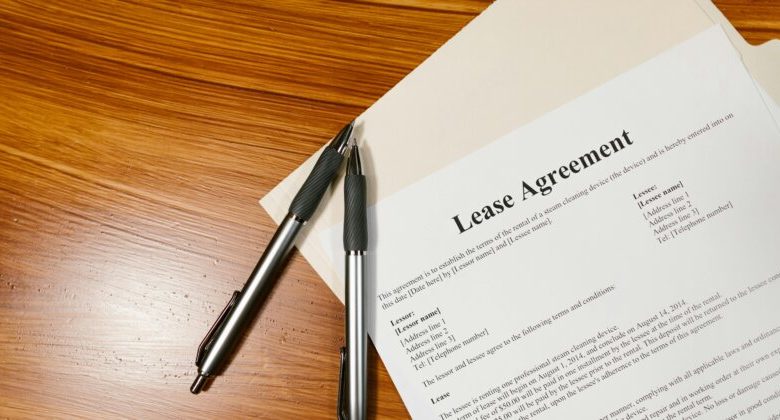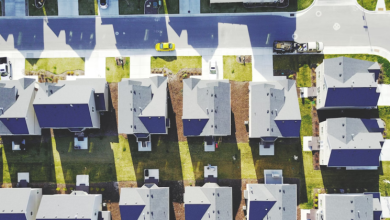Timing Growth with Smart Decisions

Every growing business hits a point where demand begins to outpace capacity. Orders increase, customers expect faster turnaround, and your team starts hinting that your current equipment just isn’t cutting it anymore. It’s a good problem to have—growth—but knowing how and when to respond is what separates thriving businesses from those that grow too fast, too recklessly.
One common solution is leasing. Whether it’s new machinery, vehicles, technology, or even marketing displays, leasing can help you scale your capabilities without tying up capital. But the decision to lease isn’t always straightforward. When done right, it can be a smart move that accelerates expansion. When rushed or misaligned, it can create unnecessary liabilities or cash flow strain.
So how do you know when leasing makes sense—and what should you be thinking about before signing that agreement?
The Right Time to Consider Leasing
Leasing is often a strategic move when buying outright isn’t practical—or when preserving capital for other parts of the business is more important. You might be ready to lease when:
- Demand is growing, but you’re not sure if it’s permanent
- You need to expand production but can’t afford a large upfront investment
- Technology evolves quickly, and ownership would mean rapid obsolescence
- You want to keep debt levels low while still growing capacity
- Seasonal spikes require temporary access to extra equipment
In these cases, leasing allows businesses to respond to opportunity without overcommitting. It creates flexibility. You can test new offerings, add production power, or improve delivery speed without buying high-cost assets that may not serve you long-term.
The Accounting Side: Right of Use Asset
Since the introduction of ASC 842, lease accounting has changed significantly—especially for businesses managing multiple leased items. Under this accounting standard, businesses must now recognize most leases on their balance sheet, whether they’re finance or operating leases. This includes leased machinery, equipment, property, and even certain service agreements that include use of tangible assets.
Each lease now appears as a right of use (ROU) Asset, along with a corresponding lease liability. This reflects the value of the asset you’re entitled to use, and the financial obligation you’re committed to over the lease term.
Accounting for ROU assets involves calculating the present value of lease payments, classifying the lease type, and amortizing the asset over its useful life. This visibility on the balance sheet helps lenders, investors, and leadership better understand the business’s financial obligations—but it also means lease decisions must be made with greater care.
It’s no longer “off the books”—so be sure any lease agreement aligns with your overall financial and operational strategy.
What You Lease Matters: From Marketing to Machinery
Not all leases are created equal—and what you choose to lease says a lot about where your business is headed. Leasing industrial machinery can increase production output, reduce bottlenecks, and lower unit costs. Think of CNC machines, packaging equipment, forklifts, or commercial ovens. These are typically long-term leases that support core business functions.
Then there are marketing-related leases—like trade show displays, branded signage, event equipment, or digital kiosks. These tend to be shorter-term, tied to campaigns or seasonal efforts. While they may not produce goods, they play a key role in business growth by attracting attention, driving engagement, and converting leads.
Some businesses also lease office tech, vehicles, or even temporary buildings to support team expansion or reach new markets. The key is understanding the purpose of the lease. Is it boosting revenue? Reaching new customers? Supporting long-term infrastructure? Align each lease decision with a measurable business goal.
Lease Types and the Flexibility Factor
Understanding the different types of leases can help businesses make smarter growth decisions. Operating leases typically offer more flexibility and lower upfront costs. They’re ideal for short-term needs or assets that will quickly become outdated. Finance leases (sometimes called capital leases) are closer to ownership, often used for mission-critical machinery with long useful lives.
Depending on your business, you might benefit from sale-leaseback arrangements—where you sell an owned asset and lease it back to free up capital—or master lease agreements that allow you to add new equipment under an existing framework as your needs evolve.
Each structure comes with its own tax, accounting, and cash flow implications. Talking to a qualified advisor before choosing a lease structure is always a wise move.
For a deeper dive into lease types and accounting considerations, the Deloitte ASC 842 Lease Accounting Guide is an excellent resource that breaks down the technical side in practical terms.
Scaling Fast Without the Capital Hit
Another important factor when considering leasing is how quickly you need to scale. Purchasing equipment outright can take weeks—or even months—depending on vendor lead times, delivery schedules, and installation requirements. Leasing can often accelerate the process, giving you faster access to the tools you need without waiting for capital approval or draining cash reserves. For businesses that experience sudden surges in demand or are entering a critical growth window, speed can be the difference between gaining market share or falling behind.
Leasing and Sustainability Goals
It’s also worth noting that leasing can support your sustainability and ESG goals. Many leasing companies now offer eco-friendly or energy-efficient equipment options—like electric vehicles for delivery fleets, solar-powered systems, or certified low-emission manufacturing machinery. For businesses aiming to reduce their environmental impact or meet internal green targets, leasing can be a faster way to adopt modern, cleaner technologies. Plus, leased assets are often newer and better maintained, meaning they typically operate more efficiently and with fewer breakdowns than older, owned models.
Don’t Forget to Negotiate
Lastly, don’t underestimate the negotiation leverage you have as a lessee—especially if you’re entering multiple agreements or longer-term leases. Lessors may be willing to offer lower monthly rates, flexible renewal options, or built-in maintenance packages to secure your business. Some agreements even include upgrade paths or purchase options that give you flexibility at the end of the term. Treat leasing discussions with the same diligence as vendor contracts or supplier agreements: shop around, get multiple quotes, and involve your legal or finance team to make sure the terms truly support your business objectives.
The Leasing Mindset
When marketing is done right, it fuels growth. But it also brings new logistical needs: more inventory, faster production, pop-up events, or new point-of-sale equipment. Marketing leaders should work hand-in-hand with operations and finance when planning campaigns that require leased equipment or assets.
Imagine launching a mobile brand activation campaign that requires leasing a vehicle, digital signage, and mobile event gear. Without collaboration between departments, it’s easy to overspend or lease the wrong things. With proper planning, however, these leased assets become powerful tools that support high-ROI initiatives.
Modern marketing is fast, nimble, and experiential—which is why leasing is often the better choice over buying. It gives marketers the freedom to be bold, without long-term asset commitments that tie up budgets.
Final Thoughts: Leasing as a Growth Lever
The question of when to lease isn’t about a magical growth number—it’s about readiness. Are you expanding in a way that needs flexibility? Are your existing assets maxed out? Is demand outpacing your ability to deliver? If so, leasing can be a powerful lever.
But smart leasing isn’t about jumping at the first opportunity—it’s about intentionality. Know what you need, understand the financial implications, and align every leased asset with a strategic goal. With the right timing, tools, and partners, leasing can be a scalable, efficient way to build capacity—without overextending your business.
After all, growth isn’t just about doing more. It’s about doing it smarter.




